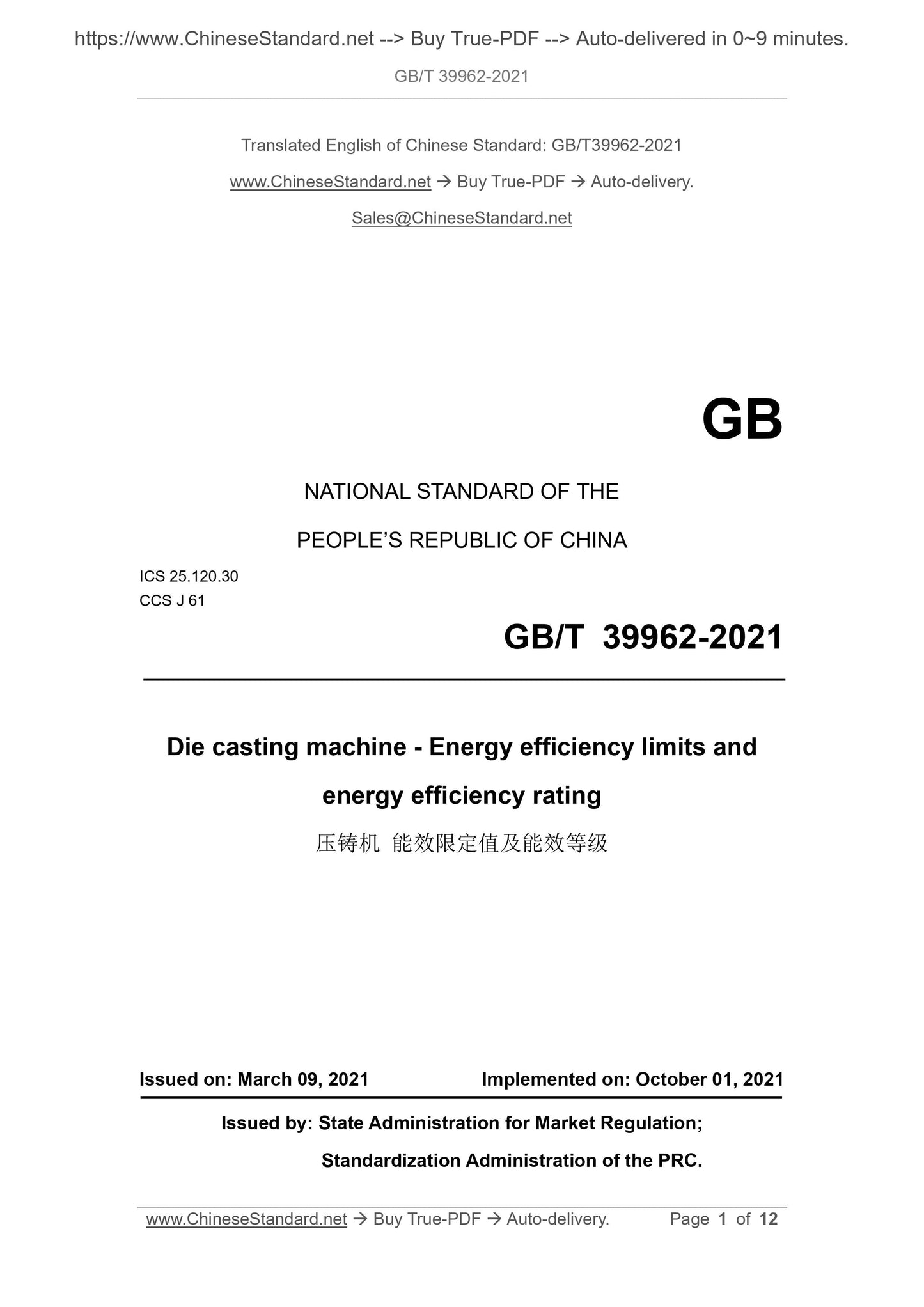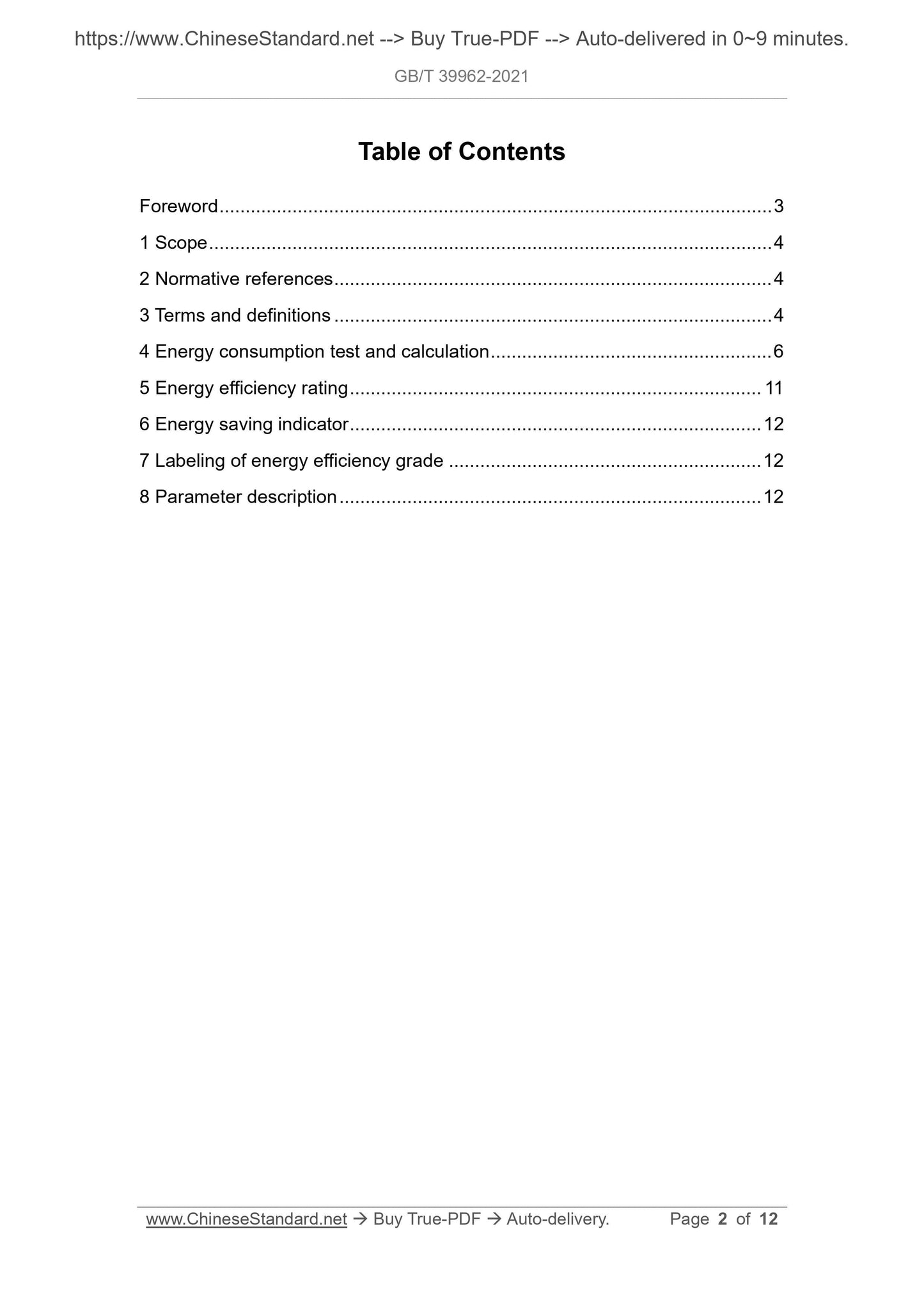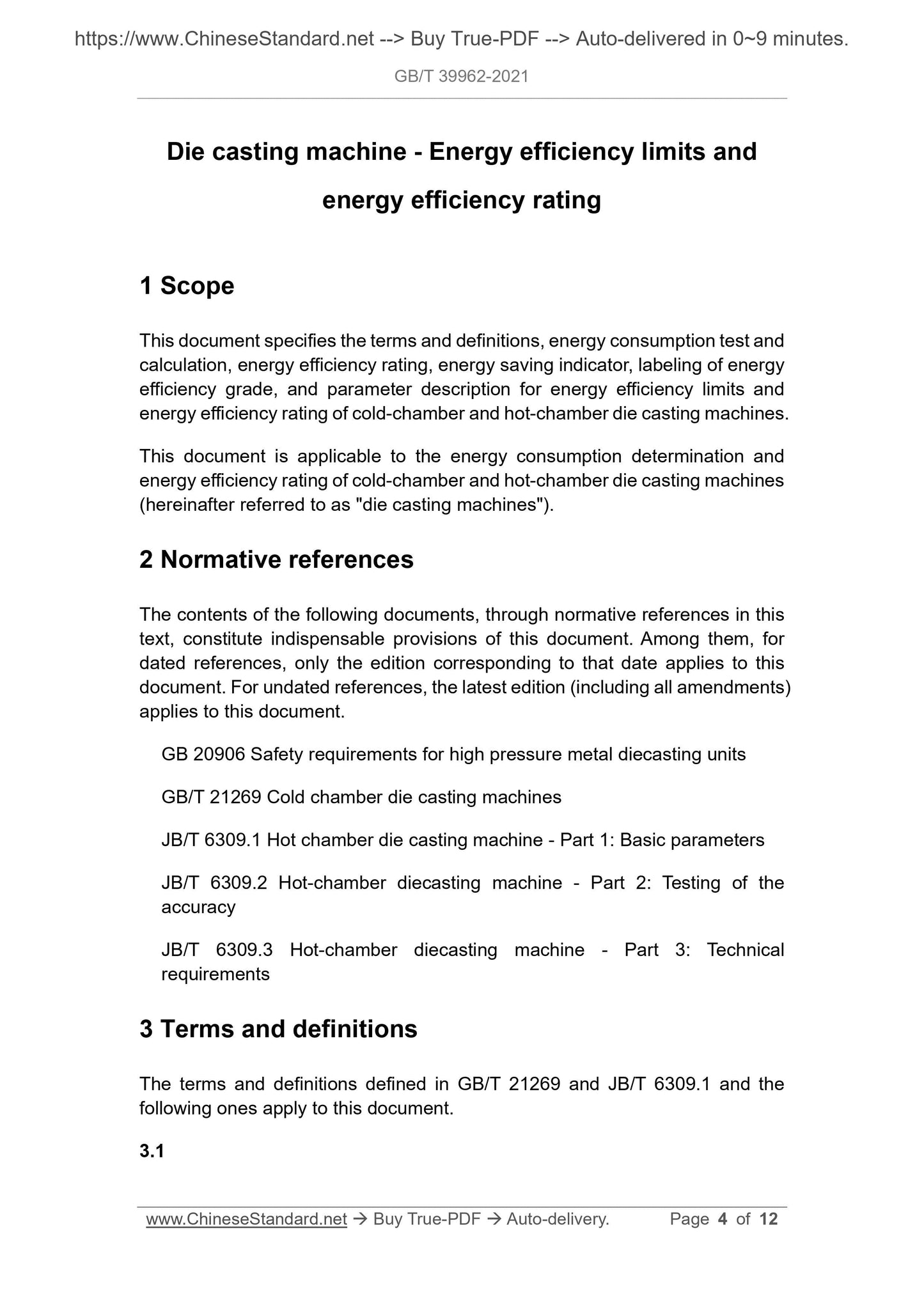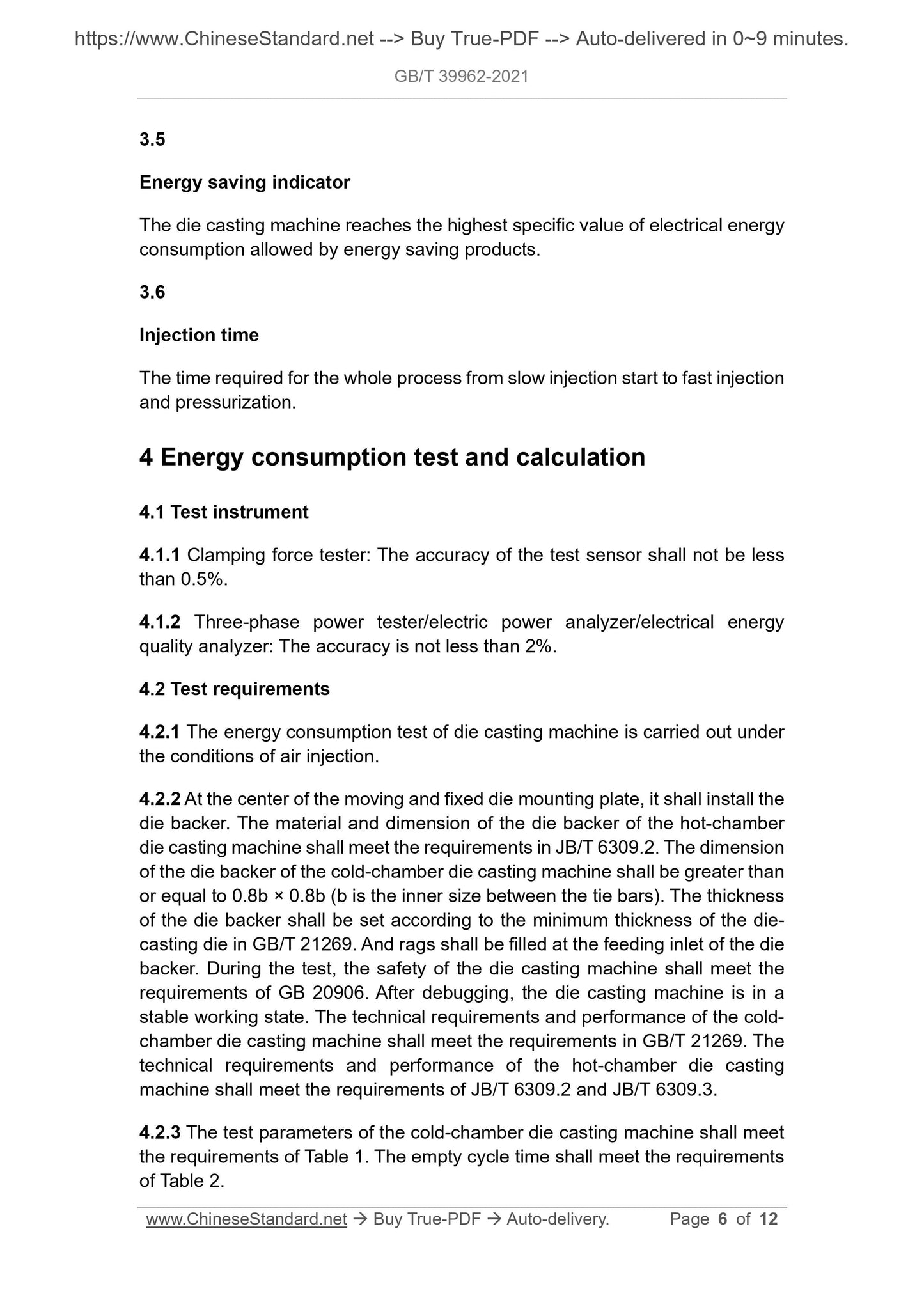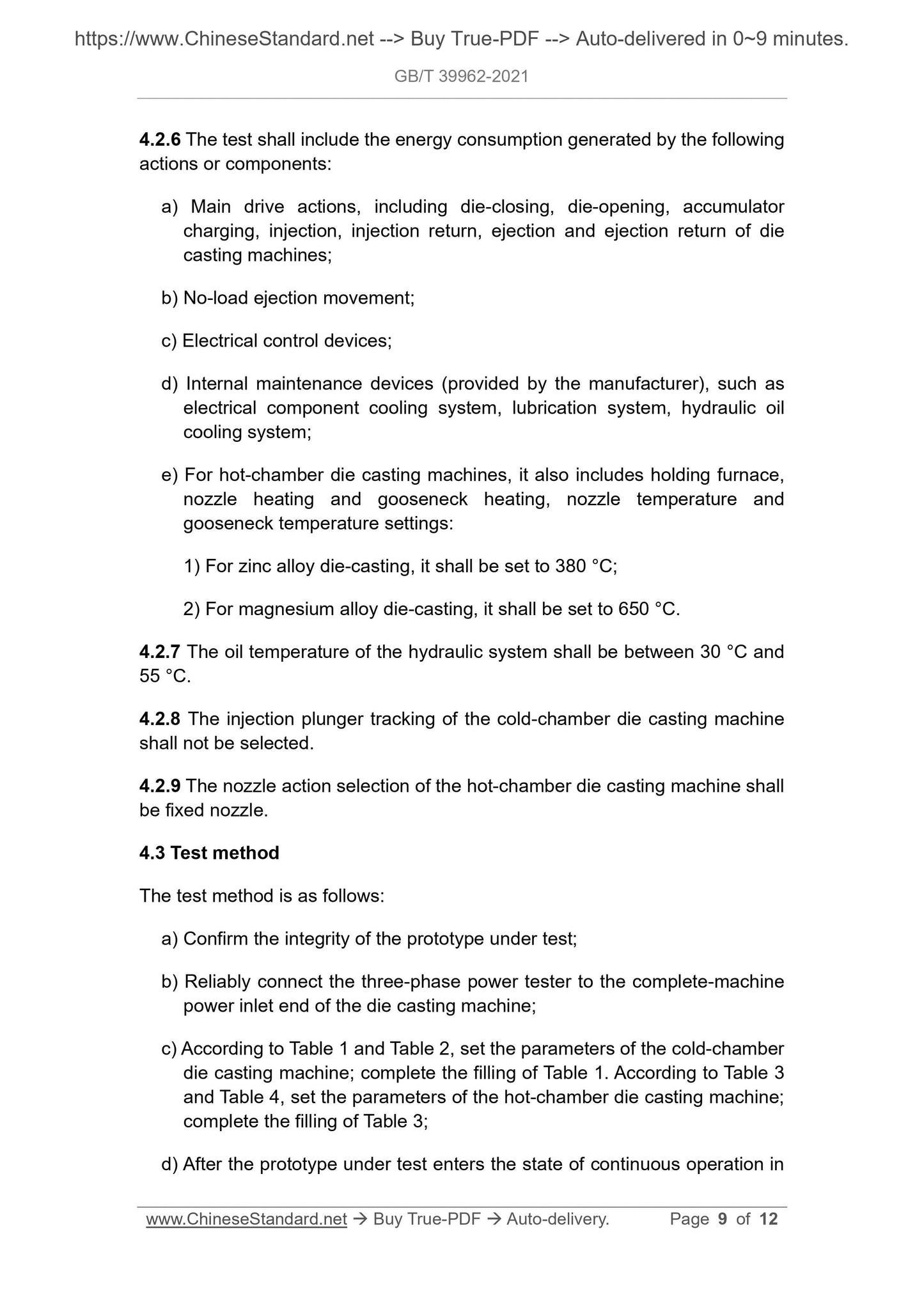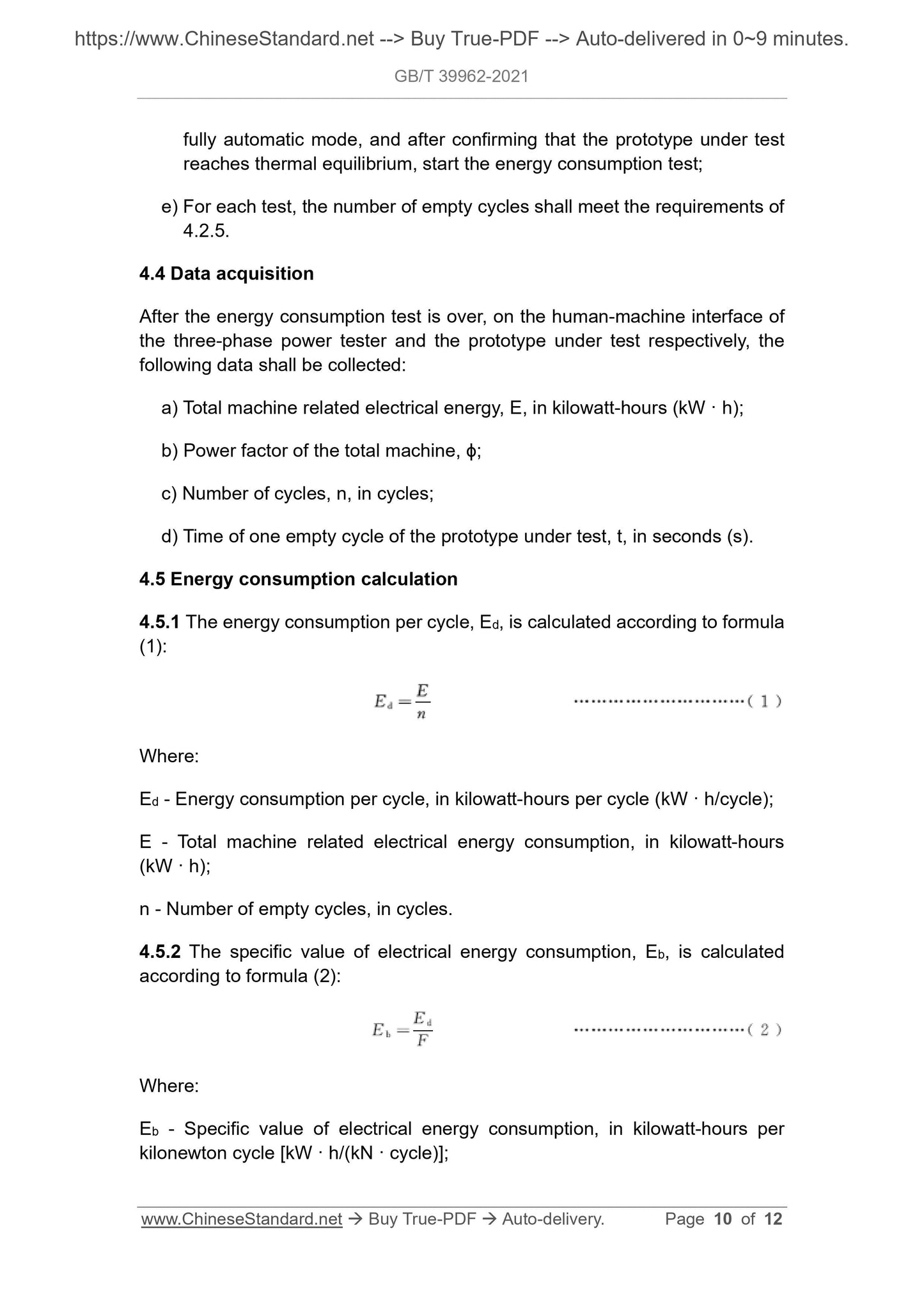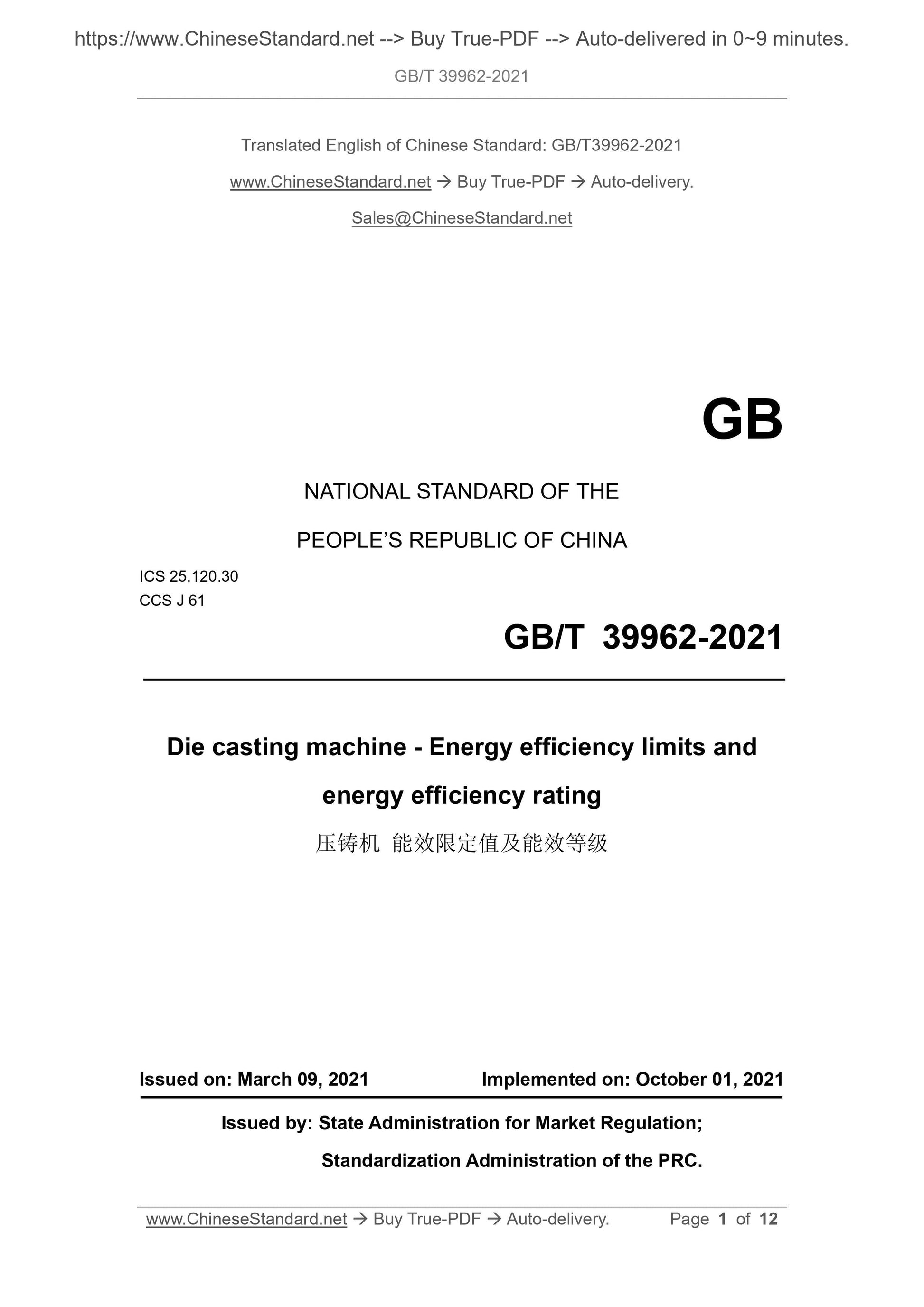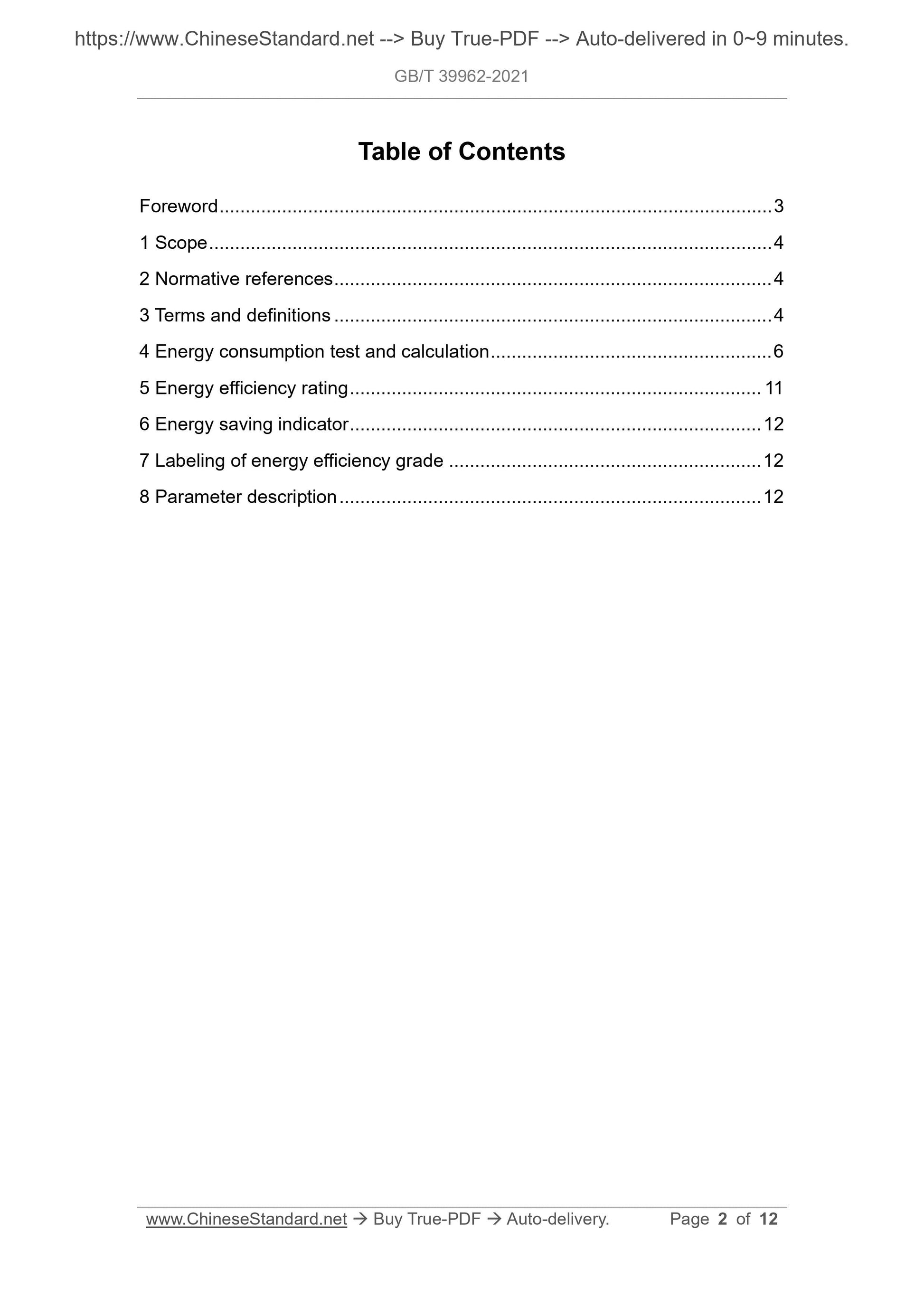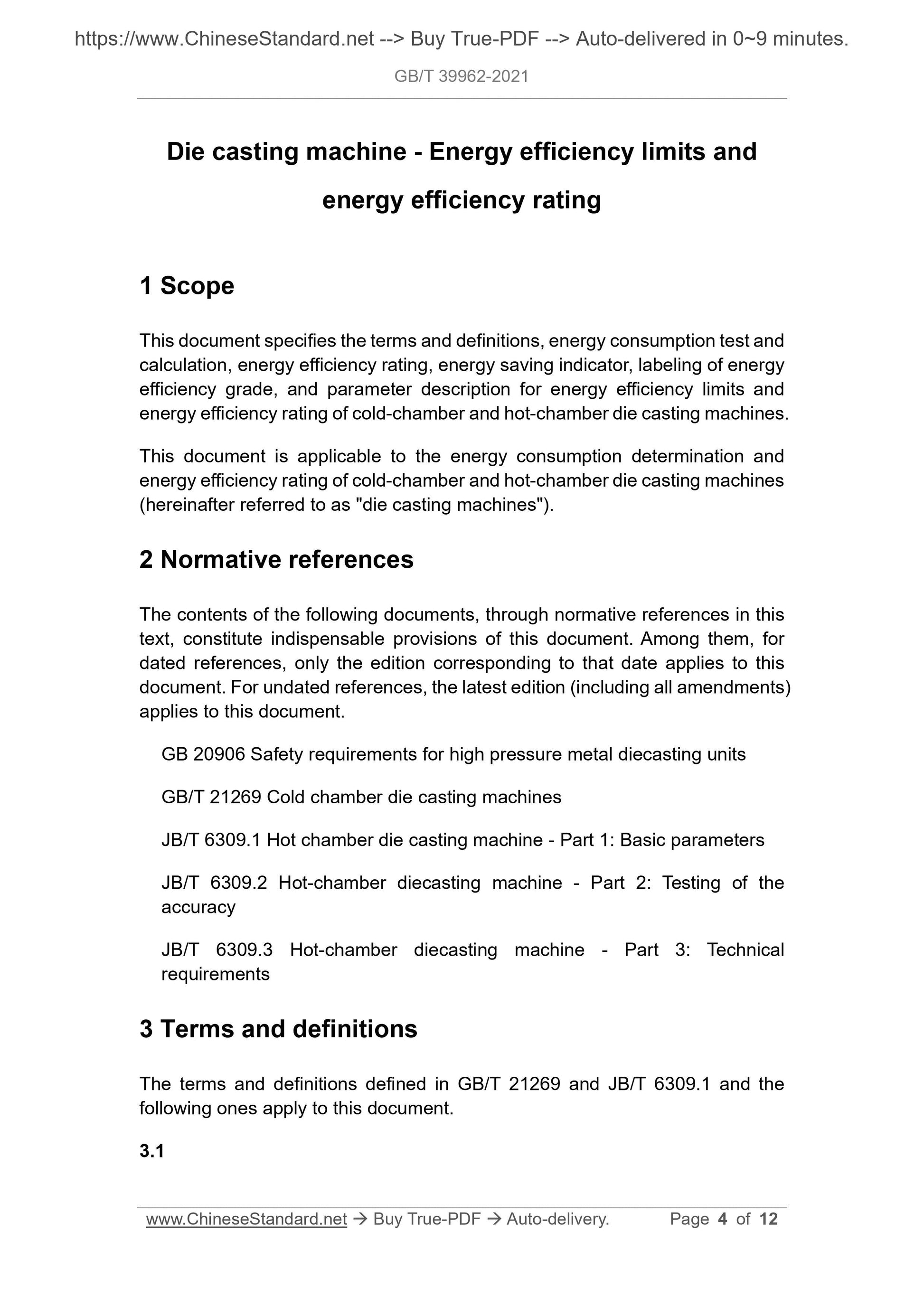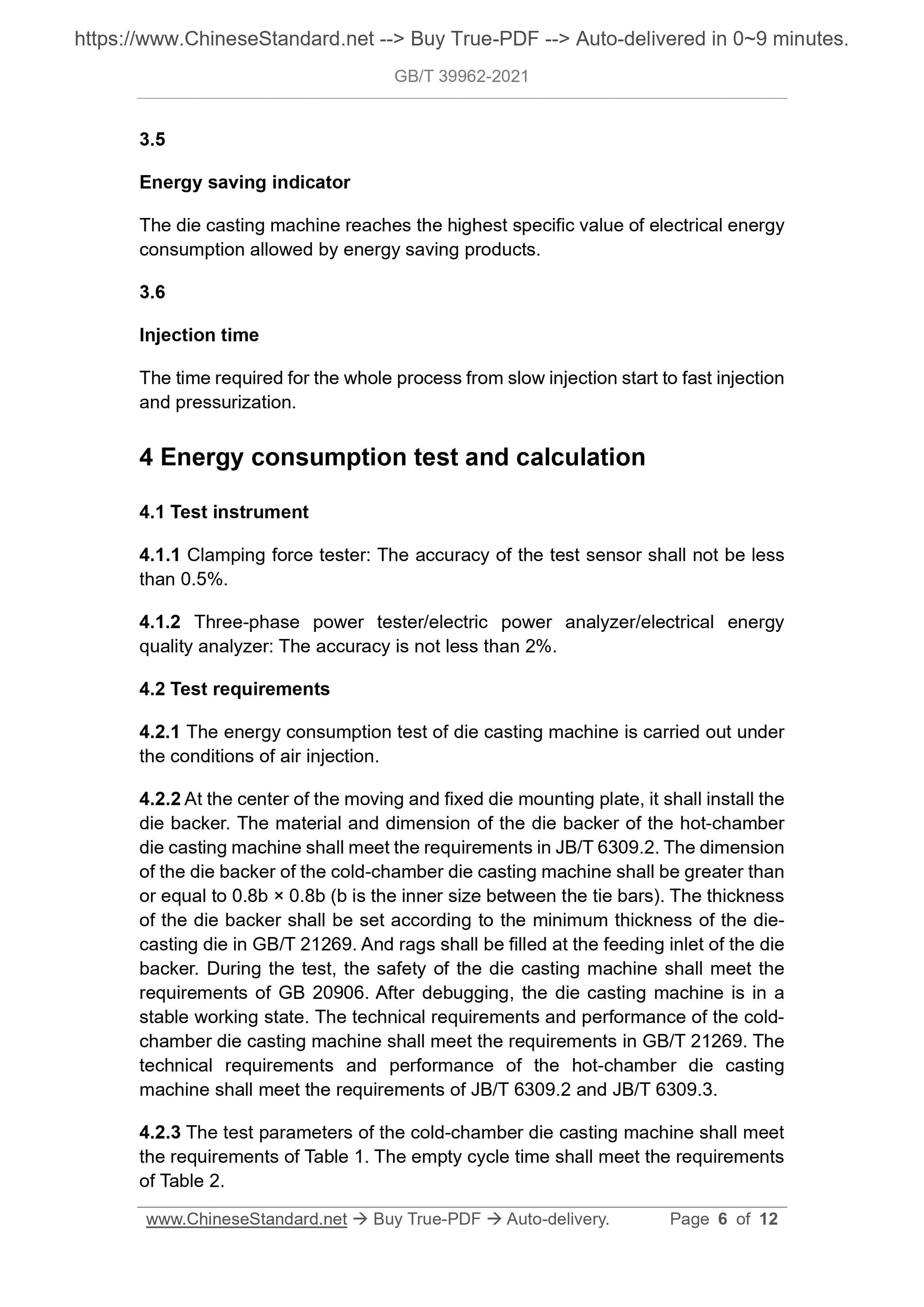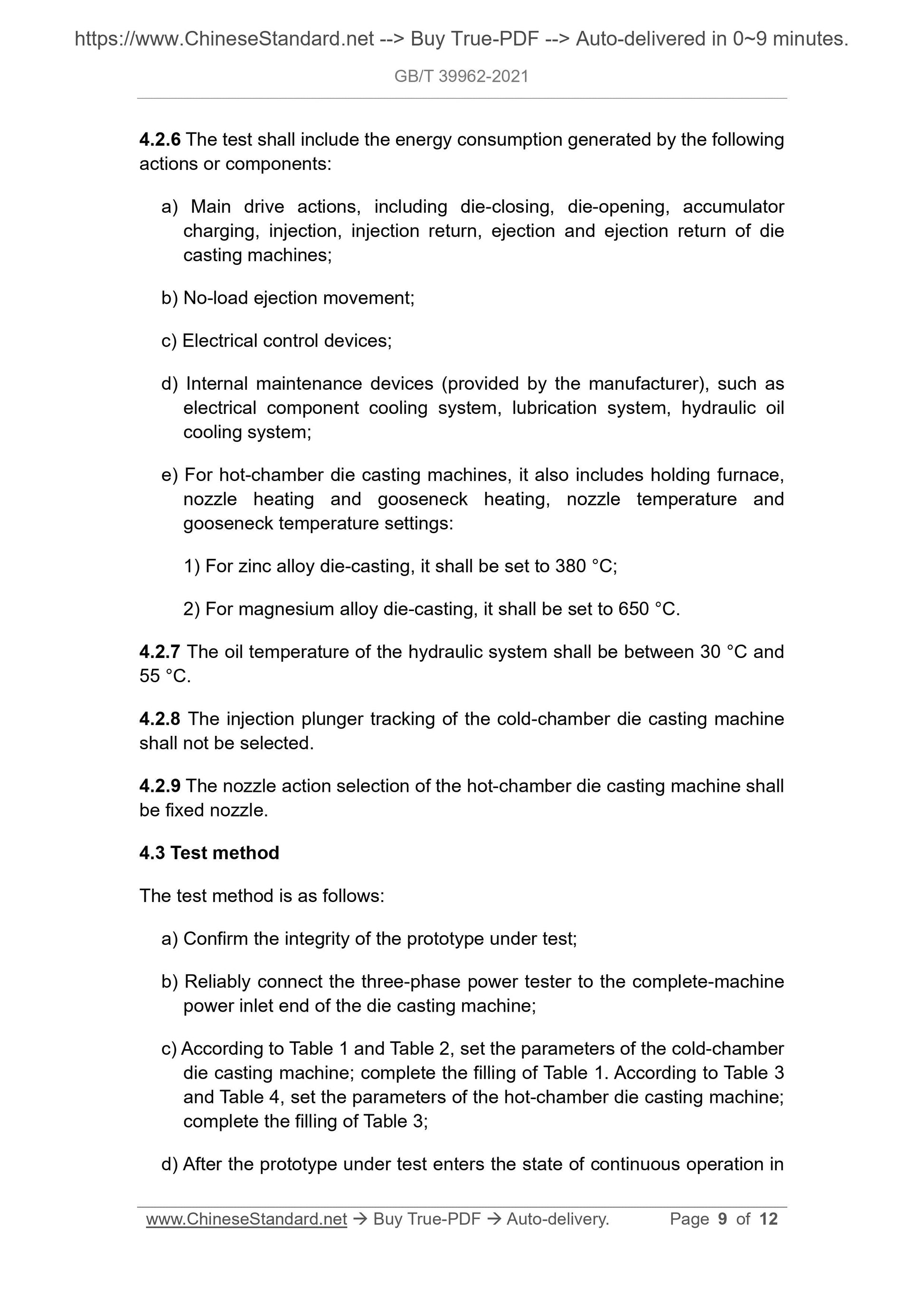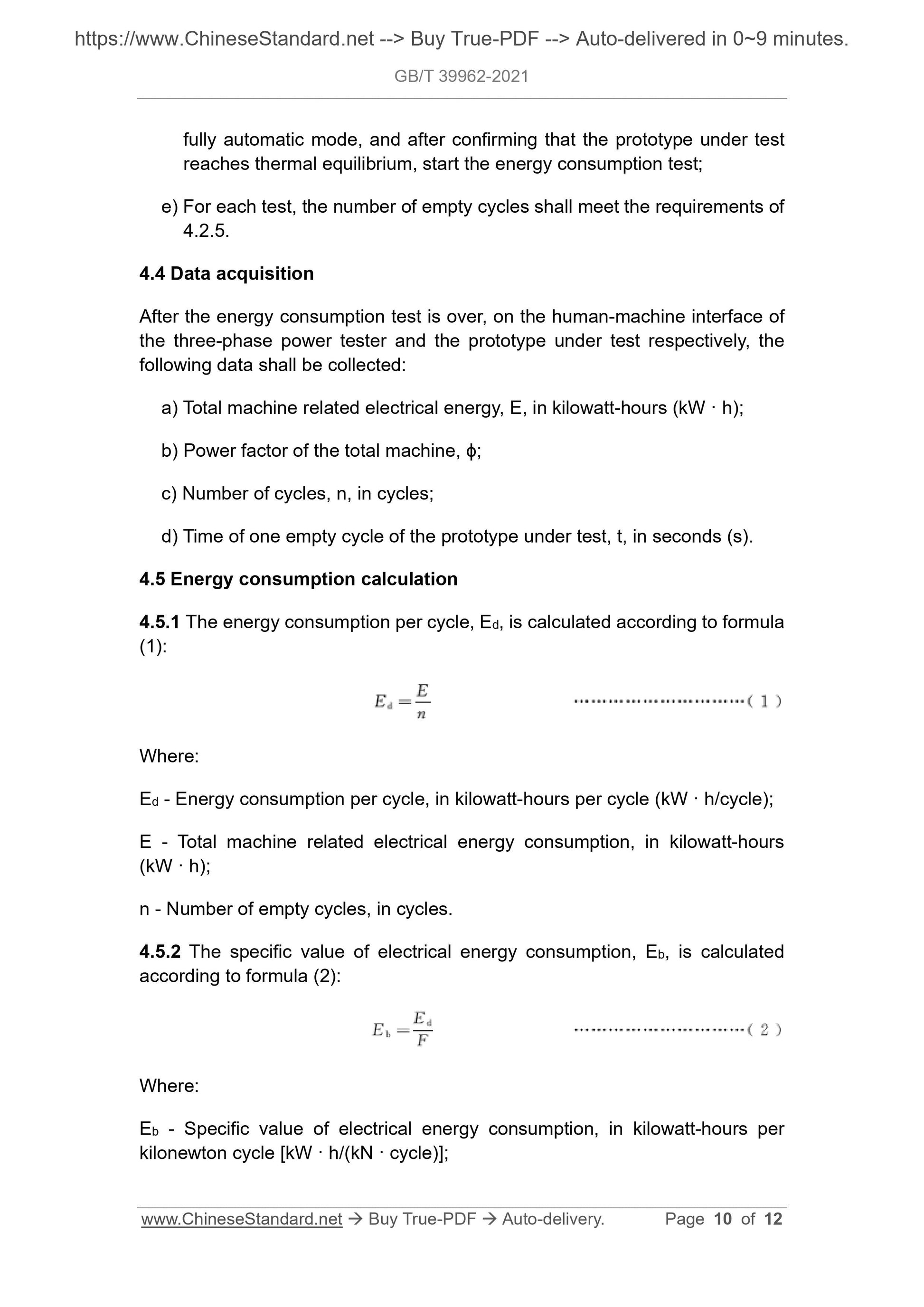1
/
of
6
www.ChineseStandard.us -- Field Test Asia Pte. Ltd.
GB/T 39962-2021 English PDF (GB/T39962-2021)
GB/T 39962-2021 English PDF (GB/T39962-2021)
Regular price
$155.00
Regular price
Sale price
$155.00
Unit price
/
per
Shipping calculated at checkout.
Couldn't load pickup availability
GB/T 39962-2021: Die casting machine - Energy efficiency limits and energy efficiency rating
Delivery: 9 seconds. Download (and Email) true-PDF + Invoice.Get Quotation: Click GB/T 39962-2021 (Self-service in 1-minute)
Newer / historical versions: GB/T 39962-2021
Preview True-PDF
Scope
This document specifies the terms and definitions, energy consumption test andcalculation, energy efficiency rating, energy saving indicator, labeling of energy
efficiency grade, and parameter description for energy efficiency limits and
energy efficiency rating of cold-chamber and hot-chamber die casting machines.
This document is applicable to the energy consumption determination and
energy efficiency rating of cold-chamber and hot-chamber die casting machines
(hereinafter referred to as "die casting machines").
Basic Data
| Standard ID | GB/T 39962-2021 (GB/T39962-2021) |
| Description (Translated English) | Die casting machine - Energy efficiency limits and energy efficiency rating |
| Sector / Industry | National Standard (Recommended) |
| Classification of Chinese Standard | J61 |
| Word Count Estimation | 10,145 |
| Issuing agency(ies) | State Administration for Market Regulation, China National Standardization Administration |
Share
